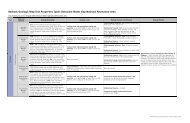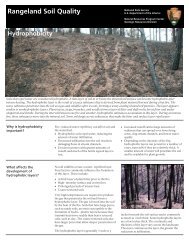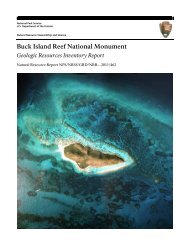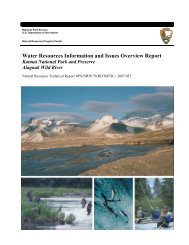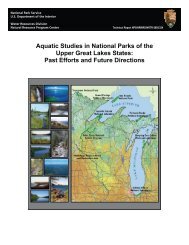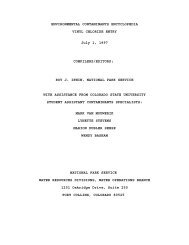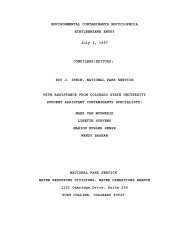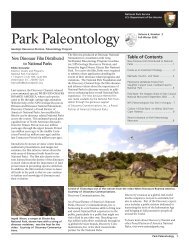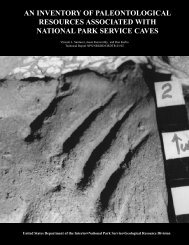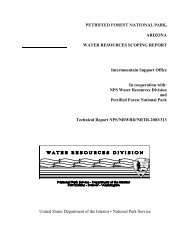ENVIRONMENTAL CONTAMINANTS ENCYCLOPEDIA ...
ENVIRONMENTAL CONTAMINANTS ENCYCLOPEDIA ...
ENVIRONMENTAL CONTAMINANTS ENCYCLOPEDIA ...
Create successful ePaper yourself
Turn your PDF publications into a flip-book with our unique Google optimized e-Paper software.
Some marine organisms have no detectable aryl<br />
hydrocarbons hydroxylase enzyme systems, namely:<br />
phytoplankton, certain zooplankton, mussels (Mytilus<br />
edulis), scallops (Placopecten sp), and snails (Litternia<br />
littorea). ... Those organisms which lack a metabolic<br />
detoxification enzyme system, tend to accumulate<br />
polycyclic aromatic hydrocarbons. /Polycyclic aromatic<br />
hydrocarbons/ [Malins DC; Ann NY Acad Sci 298: 482-496<br />
(1977) as cited in: Health and Welfare Canada; Polycyclic<br />
Aromatic Hydrocarbons p.37 (1979) Report No. 80-EHD-50].<br />
Bioaccumulation, especially in vertebrate organisms, is<br />
considered to be short-term, and is not considered an<br />
important fate process. /Polycyclic aromatic<br />
hydrocarbons/ [Callahan, M.A., M.W. Slimak, N.W. Gabel,<br />
et al. Water-Related Environmental Fate of 129 Priority<br />
Pollutants. Volume I. EPA-440/4 79-029a. Washington, DC:<br />
U.S.Environmental Protection Agency, December 1979.,p.<br />
95-9].<br />
Polycyclic aromatic hydrocarbons (PAH) were analyzed in<br />
surfacial sediments & benthic organisms in southeastern<br />
lake Erie, near a large coal-fired power plant. Sediment<br />
concn (530-770 ppb PAH) were relatively homogenous<br />
throughout most of the 150 square km area, although river<br />
& nearshore concentrations reached 4 ppm. Oligochaete<br />
worms did not bioconcentrate (on wet wt basis) any of the<br />
PAH. Chironomide midges collected 1 km offshore exhibited<br />
bioconcentration of 5 pah one of which was pyrene.<br />
Further offshore, these apparent bioconcentrations<br />
disappeared, with midges at near equilibrium with<br />
sediments. [EADIE BJ ET AL; CHEMOSPHERE 11 (2): 185-92<br />
(1982)].<br />
Mallard ducks were given naphthalene in oil over a period<br />
of two weeks. The compound was found to distribute in the<br />
skin, liver, brain, blood, muscles, and heart. [Lawler<br />
GC et al; Environ Sci Technol 12: 51 (1978) as cited in<br />
USEPA; Ambient Water Quality Criteria Doc: Naphthalene<br />
(Draft) p.C-7 (1980)].<br />
The pattern of naphthalene uptake & accum from a flowthrough<br />
system into oyster tissues was relatively<br />
constant after only a few hr of exposure. Accum was<br />
influenced by nutritional state, lipid concn, length of<br />
exposure to naphthalene & external naphthalene concn.<br />
[RILEY ET AL; MAR BIOL (BERL) 61 (4): 267 (1981)].<br />
Naphthalene was readily taken up by tissue of laying<br />
pullets, swine, and dairy cattle after oral<br />
administration of a single dose or on a daily basis for<br />
31 days. Adipose tissue, kidneys, livers, and lungs of<br />
pullets had the highest naphthalene levels after acute<br />
treatment; kidneys had high levels after chronic



